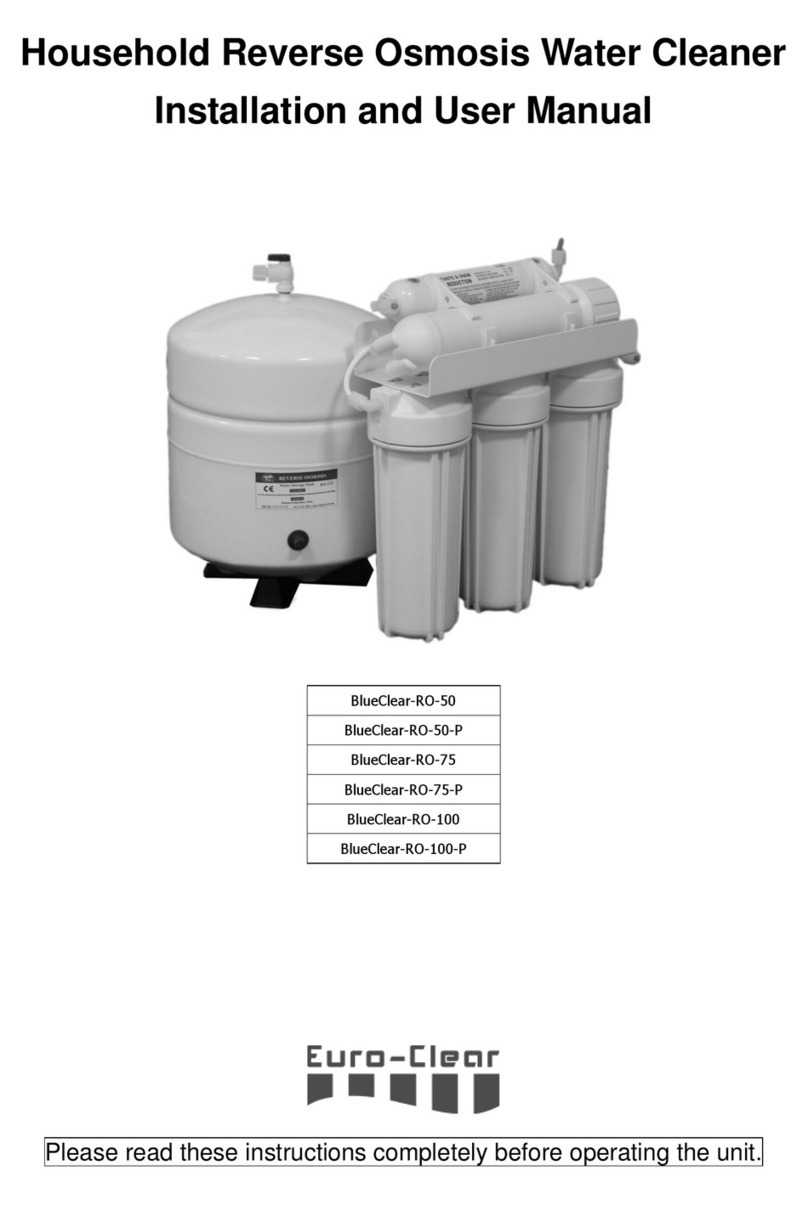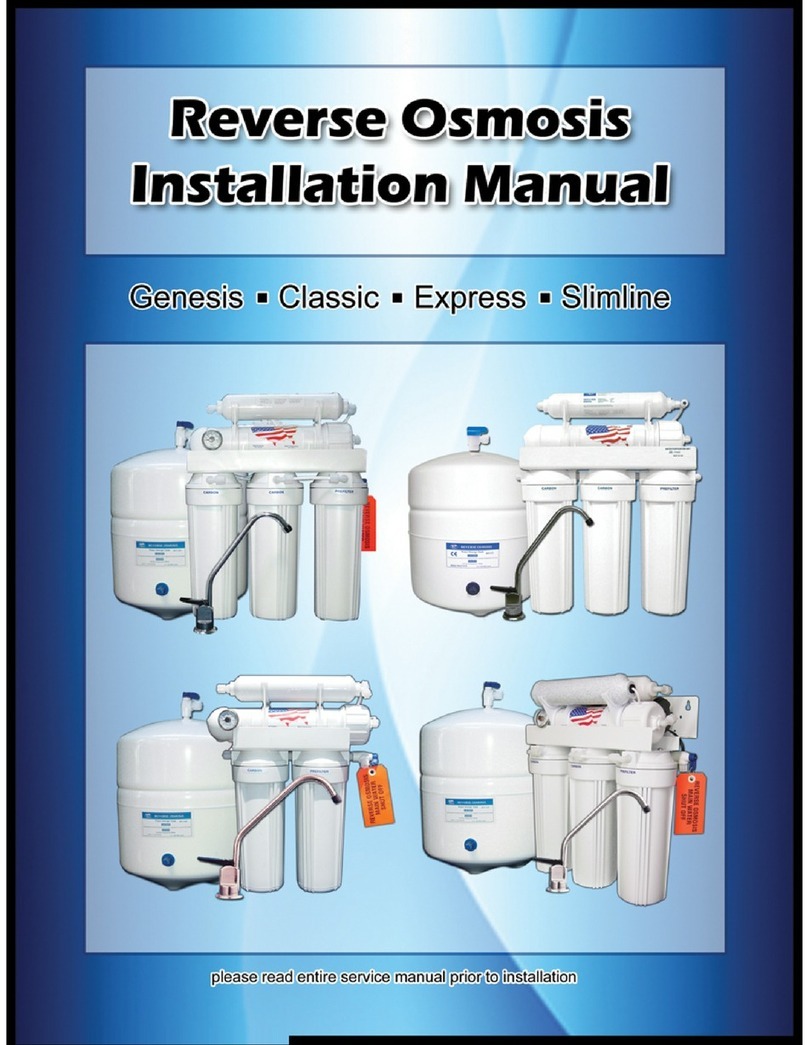
RF – Series User Manual
MKTF – 167-C 9 05/17
Preparing for installation:
1. This system includes a standard sink top
faucet without an air–gap. In localities where
plumbing codes require installation of an air–
gap, contact your local distributor to obtain a
code approved drain line adapter.
2. The reverse osmosis system may be mounted
to the side of the sink cabinet or set on the
floor of the sink cabinet. It must be positioned
to allow access for service and filter changes.
The assembly should be relatively near the
faucet to maximize flow rate. See Diagram A
for a positioning example.
3. The storage tank should be located where it
can be removed if necessary. The storage
tank may be placed in either the vertical or
horizontal position without affecting the system
performance. If there is insufficient space
under the sink for placement, the tank may be
located in an adjacent cupboard up to 50 ft.
away. See Diagram A for a positioning
example.
4. The faucet should be positioned to allow a free
flow pattern into the sink. It must be positioned
to allow ready access to the mounting
hardware under the sink. See Diagram A for a
positioning example.
Diagram A
CAUTION!! Extreme care must be
taken in drilling the hole for the sink–top
faucet. The surface material of most
sinks is extremely hard and brittle and
can be easily chipped or cracked. If you
are uncomfortable performing the
following procedure, it is recommended
that your local distributor be consulted
for techniques and other assistance.
The system’s manufacturer accepts no
responsibility for sink top damage
resulting from system installation.
CAUTION!! Before grinding or drilling,
put on appropriate eye protection (i.e.,
goggles) to protect yourself from
porcelain or metal chips.
CAUTION!! Before grinding or drilling,
ensure that the drill you are using is UL
Laboratories approved and properly
grounded to prevent electrical shock.
DO NOT USE DRILL WHILE USING
OR STANDING IN WATER!!
1. BEFORE DRILLING: Check under the
sink in the area that you plan to install
the faucet and make sure that there is a
flat surface to secure the mounting
hardware. A flat space of approximately
two inches in diameter is needed.
RECOMMENDATION: Before drilling or
grinding mask off the immediate area,
surround the grinding/drilling location,
preferably with duct tape or if duct tape
is unavailable masking tape may be
used. This procedure should help
prevent scratching of the sink surface.
2. Remove everything from inside the sink
and surrounding area. Place paper
towels in the sink to catch the shavings
from the grinding and drilling.
CAUTION!! Porcelain or enamel must
be completely removed in the drilling
Preparing for Installation
Faucet Installation































